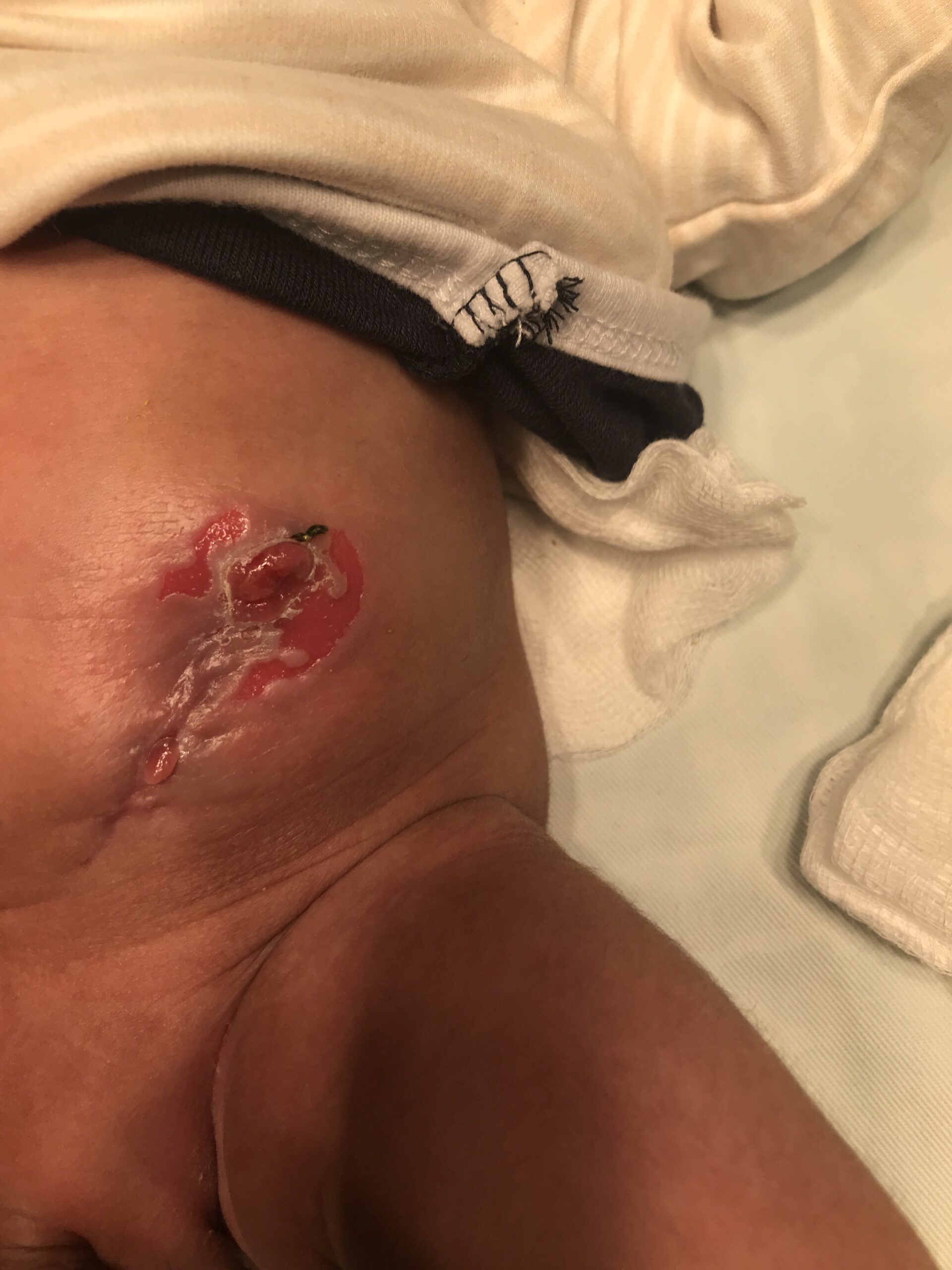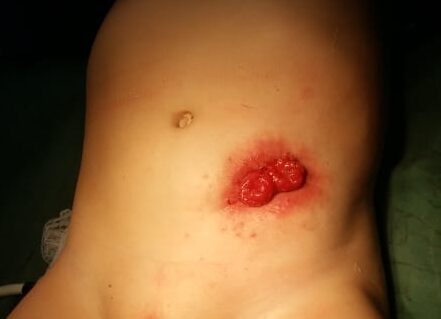Colostomy
Among patients with Anorectal Malformations/Colorectal problems, Colostomy is usually done in the first few days of diagnosis. In most children, we perform this procedure at the initial days of life. However, in some children, we perform it at a few months of life. Once the diagnosis is confirmed, it is the first step in management. The Colostomy/stoma care is a difficult job and needs a lot of family support.
Before Colostomy:
Before this surgery, we examine the child. We assess the general health. Then, usually, we perform some investigations of blood. Also, we get an X-ray of the tummy and spines. Mostly, we get an Ultrasound of the tummy too.
Most of the time, we perform this surgery as an emergency surgery. It is because the child is not passing stool from normal opening (Anorectal Malformation, Colorectal conditions, Hirschsprung’s Disease). In such conditions, we perform this surgery to give it a vent so that his tummy becomes normal. Then we start the oral feed to the child as soon as possible.
Surgical Procedure:
In this surgery, we make an incision on the left side of his tummy. Then we bring out the Colon at his tummy. We sutured it here, and the child will be passing stool from this opening at his tummy from now onward.

After Colostomy:
- After surgery, usually, we allow the child to feed after 12 to 24 hours. We start intravenous fluids and antibiotic. We continue these for 5 days, usually.
- The child will need to stay in the hospital for 1 to 3 days as per his recovery.
- After this surgery, we will keep the child in follow up and will examine regularly. For parents, the care of stoma is a difficult job in the initial days.
- We keep the child in the regular follow-up. At the age of 3 months, we usually advise Distal Colostogram to check the pathology and Anatomy. Then we planfor his next surgery, PSARP, at 4 months of age.
Complications
These children may have to face a lot of complications time by time and this becomes important particularly in resource constraint countries.

The care of child after Colostomy/stoma care is being provided here:
Related Links
Some FAQ's About Colostomy
Recovering from a colostomy may take up to two months. During this time, you will have limitations on what you can eat while the colon heals. If the colostomy is temporary, it’s common for someone to need a reversal or closure surgery after their colon has healed in about three months’ time.
Yes, it’s a major surgery. One of the risks with a colostomy is that it can lead to blockages, hernias or any other problems from scar tissue. Scar tissue and an infection are two risks in which you need to watch out for. In addition, there is also the possibility of internal bleeding or if your wound breaks open while being repaired by a colostomy.
The colostomy is there to make sure your baby can excrete waste, have regular digestion and growth while they wait for the next surgery. It also helps reduce infection risk while healing from a reconstructive surgery. In most of the cases, it is a temporary procedre to diver the feces.
A colostomy may be temporary or permanent. It is usually done after bowel surgery or injury, and most of these are end or loop colostomies. Many temporaries bring the side of the colon up to an opening in your abdomen. But it depends upon the nature of the disease, for which colostomy has been made.
In a loop colostomy, the colon stays connected to the rectum. Therefore, people will sometimes pass stool or gas through their rectum.
In cases of extreme constipation, or when a child is unable to pass feces safely due to disease or anatomical defect, then a colostomy may be performed.
A colostomy can also be reversed, but it involves making a larger incision to locate and reattach the 2 sections of colon. It depends upon the cause, for which colosotomy has been created.
